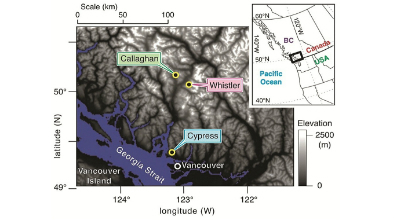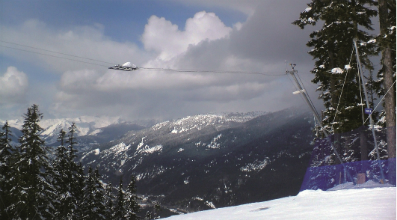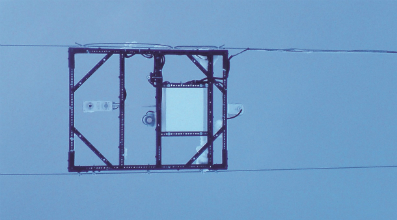The course is located in Whistler, two hours north of Vancouver in the Coastal Mountains and home to the 2010 Olympic Alpine skiing events. The Nordic skiing venue was the Callaghan Valley a few kilometers from Whistler. 
Cypress Mountain was the location for freestyle skiing and snowboarding, other events were hosted in Vancouver City. Automated measurements and manual observations were taken over three winter seasons, 2008-2010. Data from the weather station served multiple purposes:
1. Real-time use for Alpine Canada ski technicians, to aid them in choosing the fastest ski for current and forecast conditions;
2. Daily use for post-processing numerical weather prediction outputs from UBC models, to improve forecasts;
3. Daily use by the Vancouver Olympic Committee (VANOC) sports and operations managers, for their information and to provide a response if other Olympic teams inquired about the instrumentation, since it was for Canadian use only;
4. The creation of a large dataset (~16 GB) for research into snow surface conditions, mainly snow surface temperature.
The research aimed to find relationships between the atmosphere and the snow surface by monitoring how each change with time, and by incorporating anthropogenic effects like grooming the ski run and skiing upon it. This way, ski technicians would have real-time and forecast snow surface conditions from simply knowing the current and forecast atmospheric conditions.
The Olympic downhill skiing course is in a high traffic recreational ski area that is groomed nightly. This presented a major challenge in capturing the effects of the skiers and grooming equipment, and in recording what was happening right at the snow surface, as closely and safely as possible. Therefore, most instruments were suspended directly over the ski run with the rest at the side of the run on a tower. 
The CNR 1 net radiometer* from Kipp & Zonen played a large part in this research. It was deployed on the suspended instrument carriage over the snow surface to monitor the four important components of radiation, upwelling and down welling short-wave and long-wave, with its two pyranometers and two pyrgeometers.
As expected, the surface energy budget was of utmost importance in evaluating the connection between the atmosphere and the snow surface. A preliminary look at the data confirmed this, and further suggests that detailed knowledge of the radiation budget was also crucial. This requires all of the four radiation components, as measured by the CNR 1.
 The instruments were removed from the site following the Olympic Games, however the study continues. A conceptual model is being created to represent the interaction between long-wave radiation emitted by the sky under different weather conditions, by the tall evergreen trees lining the Olympic course and by the snow surface itself.
The instruments were removed from the site following the Olympic Games, however the study continues. A conceptual model is being created to represent the interaction between long-wave radiation emitted by the sky under different weather conditions, by the tall evergreen trees lining the Olympic course and by the snow surface itself.
This long-wave budget will be combined with solar heating of the snow, as well as other factors in the surface energy budget, to calculate snow surface temperature. Data used during the Olympics, as outlined earlier, was very well-received and feedback indicated that the information was helpful and in many cases improved team performance.